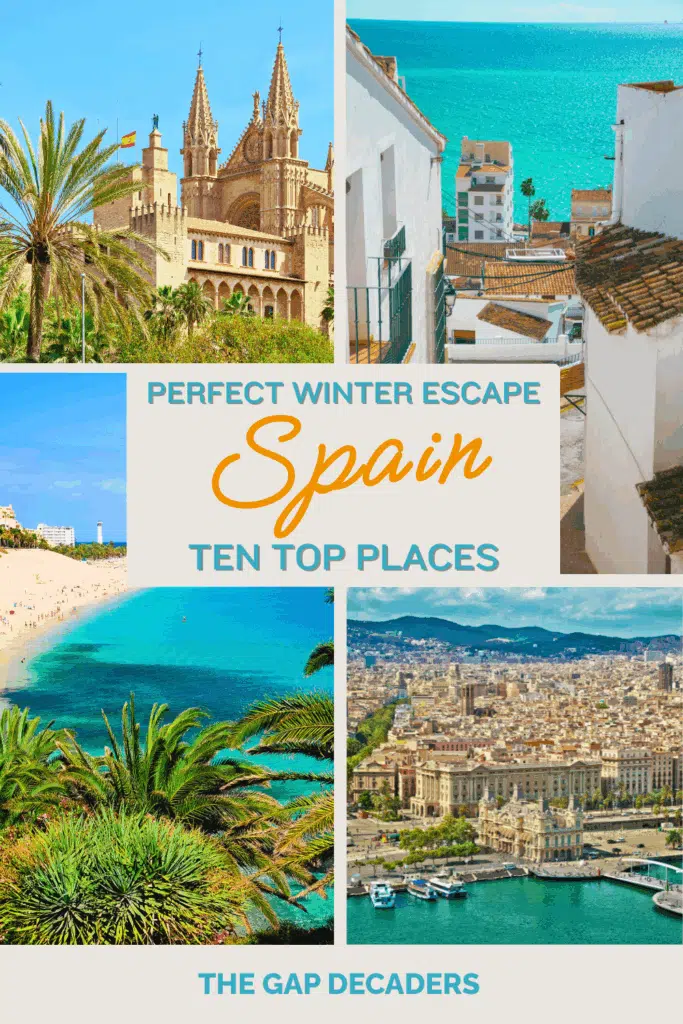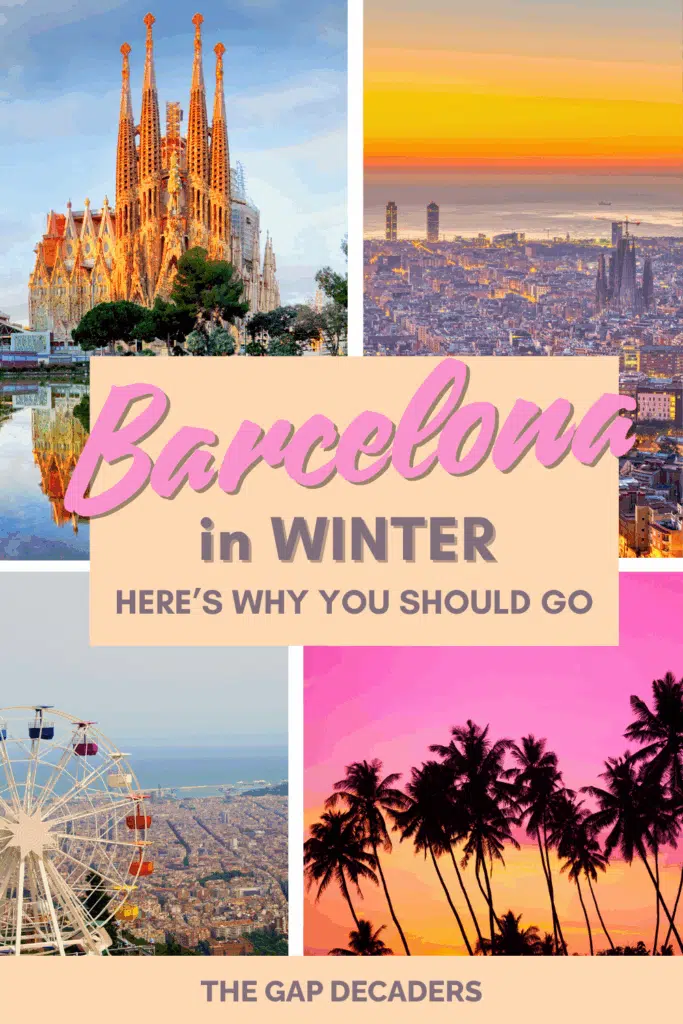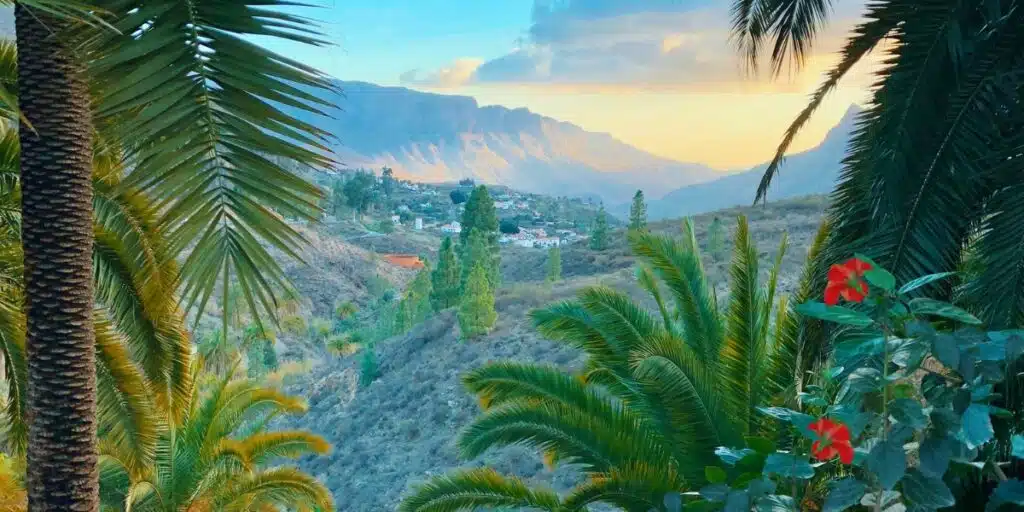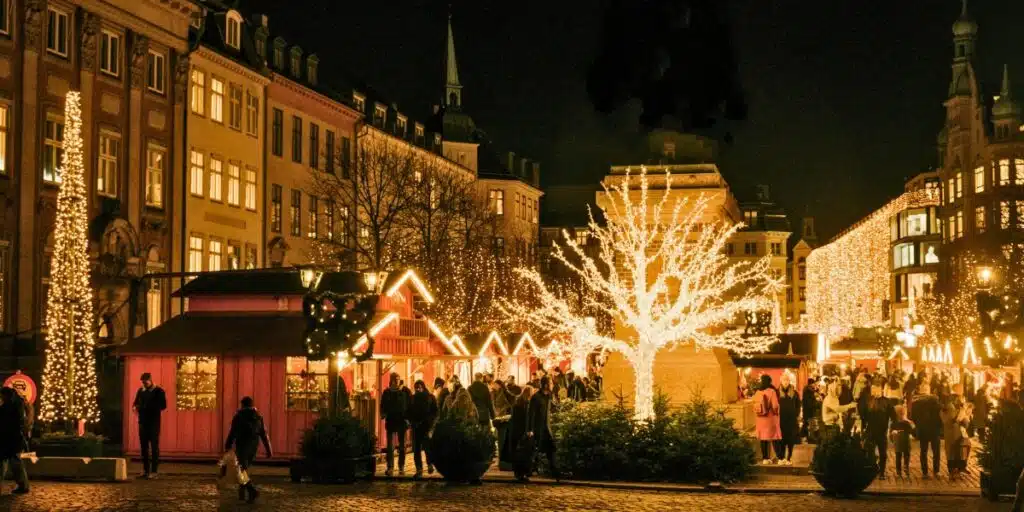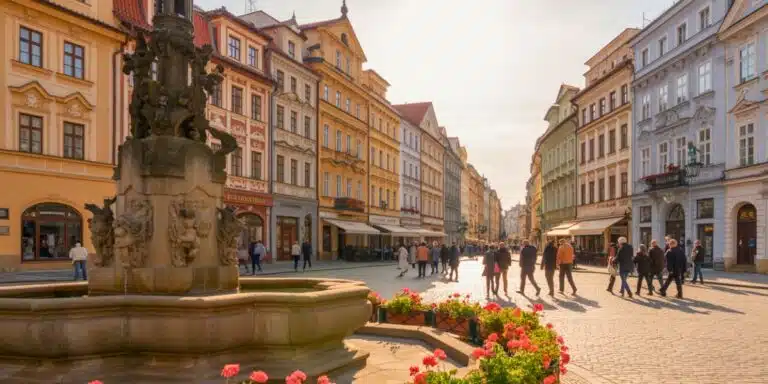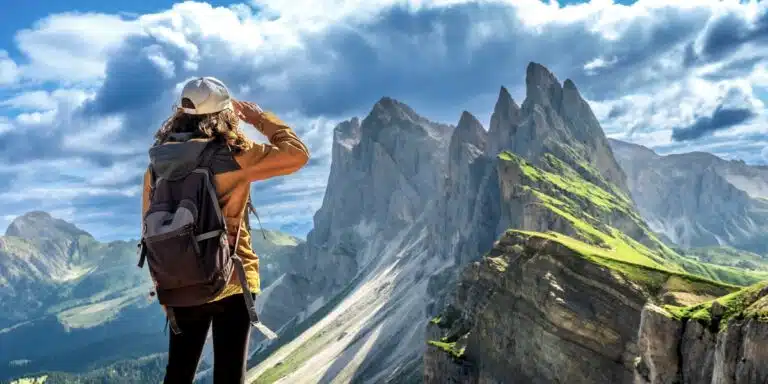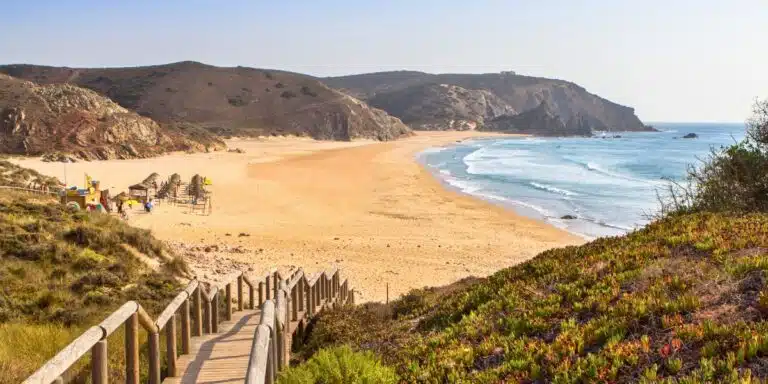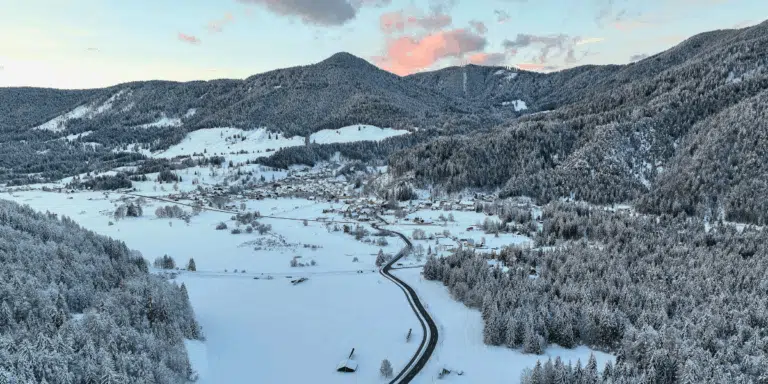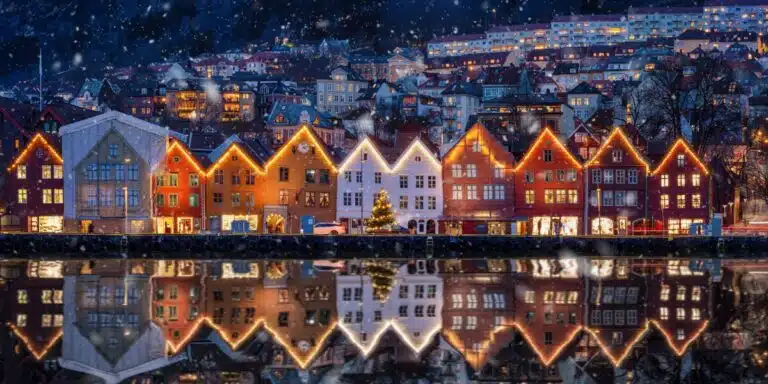This post may contain affiliate links, from which we earn an income. Click here to read our affiliate policy.
The ultimate guide to Spain in winter
Are you thinking of spending the winter in Spain? Wintering in Spain offers predictable and warm weather, a relaxed vibe, and cheap living, making this lively country the number one spot for winter travel in Europe.
With lively resorts, historic cities, and beautiful coasts bathed in the mild climate, along with fabulous food and friendly locals, Spain is the perfect place for snowbirds to have a great time through the winter months.
We have spent the past decade dodging Northern Europe’s cold weather and overwintering in Spain. In our guide, we’ll share with you the best Spain winter destinations, plus Spain travel tips and lots of ideas for things to do and see in the land of flamenco, tapas, and winter sun!
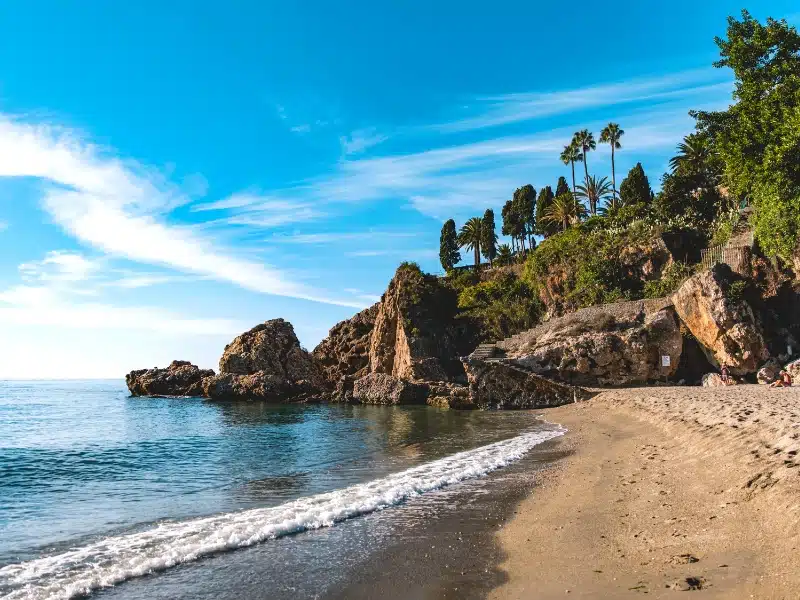
In a hurry and looking for the best destinations for wintering in Spain?
Reasons to Visit Spain in Winter
The Weather
When is winter in Spain? Well, winter in Spain actually starts twice. That’s because seasons are defined in two ways: astronomical seasons, which are based on Earth’s position as it rotates around the sun, and meteorological seasons, which are based on annual temperature cycles.
The meteorological winter in Spain, and the whole northern hemisphere, starts on the 1st December and lasts until the last day of February. The astronomical winter in Spain starts on the 22nd December and lasts until the 21 March.
December is one of the coolest months in Spain, but it’s rarely harsh. In the south and along the coast, daytime temperatures typically range from 15 – 18°C | 59 – 64°F, with plenty of bright, dry days. Inland areas like Madrid are colder, especially at night, while the Canary Islands enjoy subtropical conditions with highs around 20 – 22°C | 68 – 72°F.
Spain in January has the coolest daytime temperatures of the winter months. Still, much of the country sees dry and sunny weather, with average daytime highs in the mid to high teens celsius (around 60 – 65°F). The south and the islands remain the warmest regions, while central and northern areas can experience frost and occasional snow.
Spain in February sees temperatures begin to rise gradually, and there’s a noticeable hint of spring in the air. In southern regions like Andalucía, Murcia, and the Valencia coast, you’ll often see wildflowers blooming as average highs reach 17 – 20°C | 63 – 68°F. The days get longer and sunnier, particularly toward the end of the month, making it an appealing time for early outdoor adventures.
The Carnivals
Another great reason to winter in Spain is the carnival! Celebrated during February in cities, towns, and villages all over the country, carnaval is a special time of festivities in Spain that takes place in the days leading up to Lent. Traditionally a time to indulge in food and drink, Spainish festivals are a noisy riot of colorful outfits, dancing, music, and parties.
The largest and best celebrations take place in the coastal city of Cadiz (known for the naughtiest carnival in Spain!), on the Canary Island of Tenerife, and in the resort town of Sitges, near Barcelona. But wherever you are there will be some sort of celebration during this time, and carnivals in Spain are always well worth attending!
Christmas in Spain
Spain in December is a vibrant and joyful experience, filled with unique traditions, festive markets, and mild winter weather. From the twinkling lights of Madrid to the lively nativity scenes in Barcelona and the sweet treats like turrón and polvorones, a Spain Christmas blends religious heritage with lively street celebrations like the Three Kings Parade.
Alternatives to Winter in Spain
If you’re wondering whether the European countries of Portugal, Greece, or Southern Italy might be a better destination than Spain to spend the winter season, remember that it’s not all about mild temperatures. It’s also about predictability, air currents, wind, sunshine hours, and sometimes, a bit of luck!
If you prefer cooler winter holidays, we’ve also got the best Northern Europe winter destinations for you which have a good dose of snow, ice, and Christmas Markets!
P.S. The word for winter in Spanish is invierno.
Winter in Spain Weather Map
This heat map shows the average heat across Spain in the winter and you can see how much the average temperatures vary, from a balmy 21 degrees Celsius | 70 degrees Fahrenheit on Spain’s Canary Islands to a pretty chilly 8 – 14 degrees Celsius | 46 – 57 degrees Fahrenheit in Galicia in northern Spain.
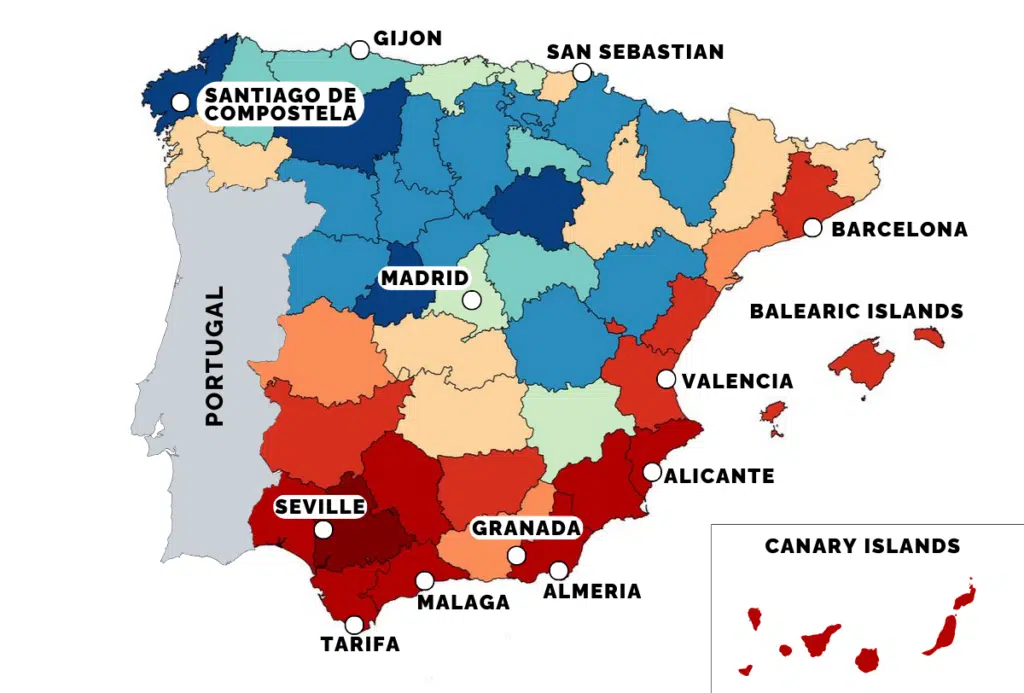
Is this your first time visiting Spain? Get all the information you need in our Spain Travel Guide, including the best things to pack, the best time of year to go, getting there, and practical tips to help you have the best trip!
Southern Spain
The south of Spain is the first choice of winter holiday for many, offering some of the best winter temperatures in Europe and the Iberian Peninsula. In fact, winter is a perfect time to visit Andalucia, as it’s often unpleasantly hot and humid during the summer months.
Costa Tropical
The pretty Costa Tropical, sometimes called Costa Granada, is sandwiched between Almeria, the Costa del Sol and the Sierra Nevada National Park. Much less visited than its more famous neighbor, Costa Tropical has fewer tourists and is more relaxed, making it a great place to really chill out.
The five resorts of Almunecar, Salobrena, Motril, Castell de Ferro, and La Rabita offer golfing, hiking, rocky coves with sandy beaches, and lots of watersports including sailing. You will probably want a wet suit for sports, but during a warm winter, you can swim in the sea without one as the Sierra Nevada mountains shelter this area from any cold northerly winds.
The Costa Tropical has retained a quaintness and authenticity that is lacking on the Costa del Sol, and the people are friendly and welcoming. Away from the big resorts, the traditional villages of Nerja and La Herradura have gorgeous bays, vibrant local markets, and lots of great places to eat seafood and tapas.
RELATED POST: Fall in Love with Spain: 20 of Our Favorite Things to See & Do
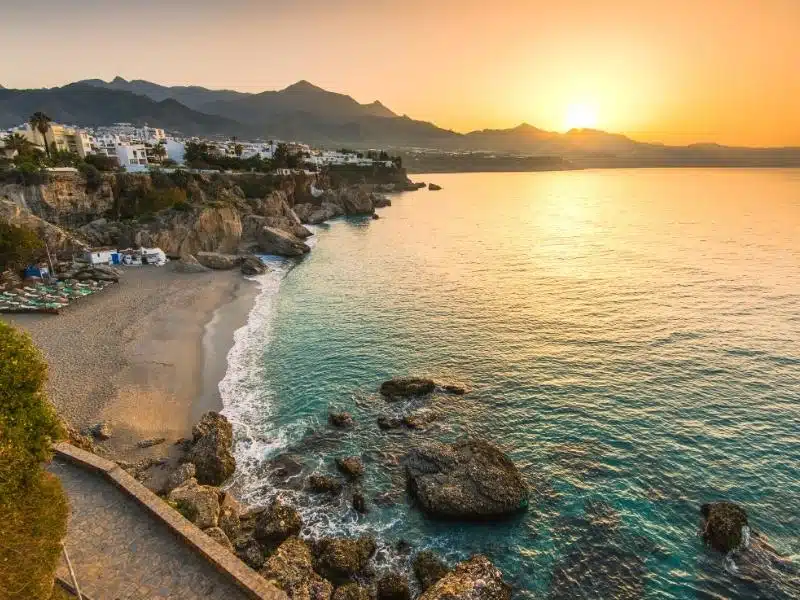
Make sure you have travel insurance you can trust when traveling in Spain. We recommend True Traveller for their excellent TrustPilot reviews, variety of cover options, best activities cover as standard, great prices, and excellent service.
Costa del Sol
The winter weather in Costa del Sol in Spain is some of the best in Europe. The stretch of coast between Estepona and lively Malaga is blessed with stunning beaches, and vibrant towns and cities making it a dream winter sun destination.
There are lots of things to do in Malaga, with a beautiful cathedral and old town to explore, plus cosmopolitan restaurants, beachside chiringuitos, fabulous beaches and top-class shops.
Marbella is another great destination in the Costa del Sol, where you’ll find delicious tapas amongst the orange trees of the old town and more fantastic beaches.
From here to Estepona, the coast is very built up and the busy A7 road runs through all the towns and villages. The whole of the Costa del Sol is busy year-round, and campsites and aires are full of Northern European motorhomers spending the entire winter here.
Inland amongst the dramatic landscape are the historic town of Ronda, famous for the specatcular Puente Nuevo bridge and plaza de toros (bullring). The popular Caminito del Rey hike, ancient Antequera, famous for its Lover’s Rock and neolithic dolmens, and Pueblo Blancos on the crest of every hill make a trip into the heart of Andalucia a must.
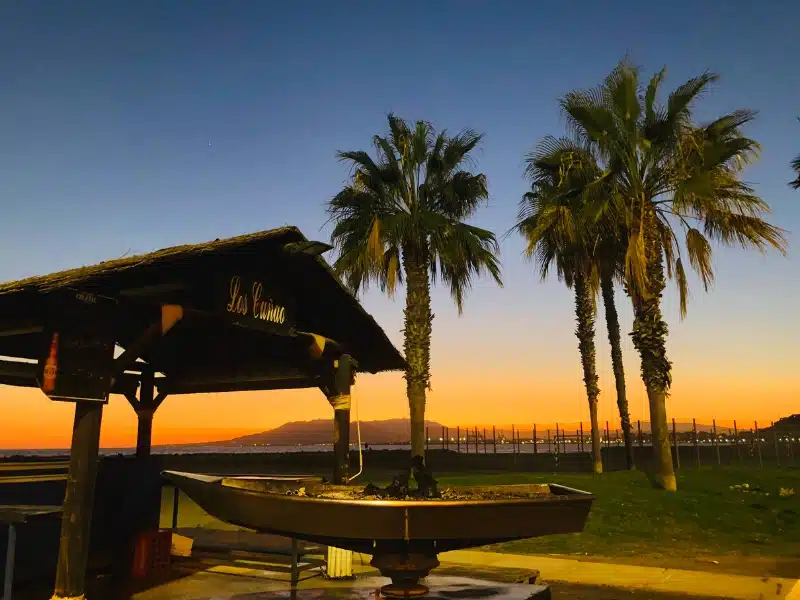
Costa de la Luz
On Spain’s western Atlantic coast is the undiscovered Costa de la Luz, which extends south to Tarifa, the most southern point of mainland Europe, and north to the port city of Huelva via the sea city of Cadiz, the most ancient city in Europe.
Off the beaten path to the south are beautiful beaches dotted with chiringuitos serving locally caught fish and pretty white villages like Vejer de la Frontera, quietly unassuming yet packed with history and architectural gems.
The fabulous Cape Trafalgar, the site of the 1805 naval Battle of Trafalgar, in which the British Royal Navy commanded by Admiral Horatio Nelson decisively defeated Napoleon’s combined Spanish and French fleet, is well worth a visit, as much for its fantastic beaches and lighthouse as its history.
Head north for Christopher Columbus history in La Rábida, where you can see life-sized replicas of the ships he sailed across the Atlantic for the New World (and they are tiny) and the Monasterio de Santa María de la Rábida, where the explorer stayed as he was preparing for the trip.
Then head south for Tarifa where the Atlantic Ocean and Mediterranean Sea meet. It’s a windy spot, but with that wind comes the warm African air to create a balmy climate during winter.
There is hiking aplenty around Tarifa, with lots of water activities such as kite surfing and windsurfing (although you will need a wet suit to get in the wild and cold Atlantic), climbing, and mountain biking.
Tarifa also makes a great spot from which to take a day trip to the vibrant port city of Tangier in Morocco. It’s easy to get a ferry over the Strait of Gibraltar for a day or overnight trip and explore the culture of North Africa.
RELATED POST: Tarifa to Tangier: Tips & Tricks for a Day Trip to Morocco
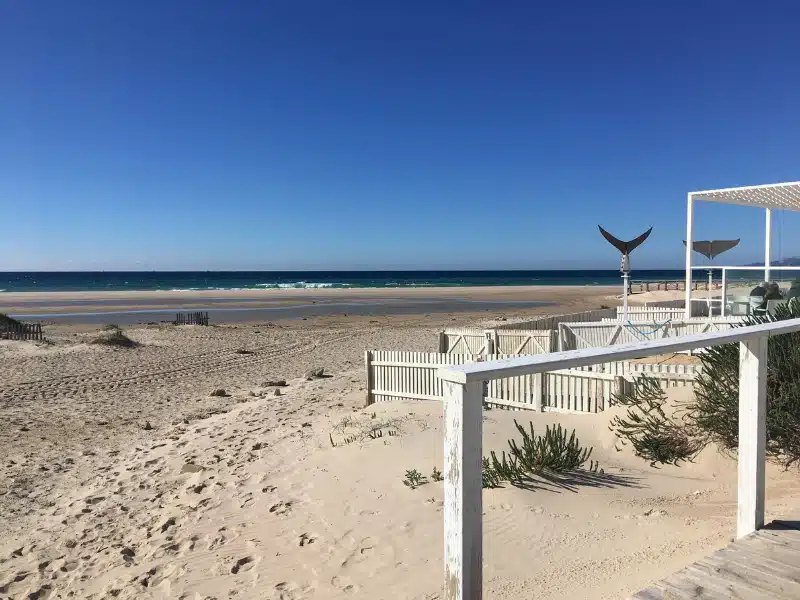
Historic Cities of Andalucia
The historic southern cities of Andalucia are heavy with Moorish influence, which is evident in the wonderful food, wine and sherry, architecture, the passion of flamenco, and the iconic Pueblo Blancos, or White Towns, set amidst stunning landscapes that you won’t want to leave.
The Andalucian cities of Cadiz, Seville, Jerez de la Frontera, Cordoba, Granada, and underrated Jaen make for an amazing road trip through the olive groves and mountains of the southern Spain landscape. Start and finish your road trip in Malaga for a taste of beach life too.
The area around Seville and Cordoba is called ‘the frying pan of Europe’ and is known for its scorchingly hot summers, as well as being the warmest place in mainland Spain in winter. It can be cooler elsewhere in the interior, especially in Granada which sits in the magnificent Sierra Nevada mountain range.
A Granada winter will offer views of snow-capped peaks from the city and easy access to ski resorts in the Sierra Nevada mountains. The city is also home to the stunning Alhambra Palace, which just adds to the heady atmosphere.
But equally, we have strolled around Seville and Cordoba in t-shirts in January, sitting in the afternoon sun over a long lunch of tapas and local wine!
RELATED POST: The Perfect Andalucia Road Trip: Itinerary, Map & Tips
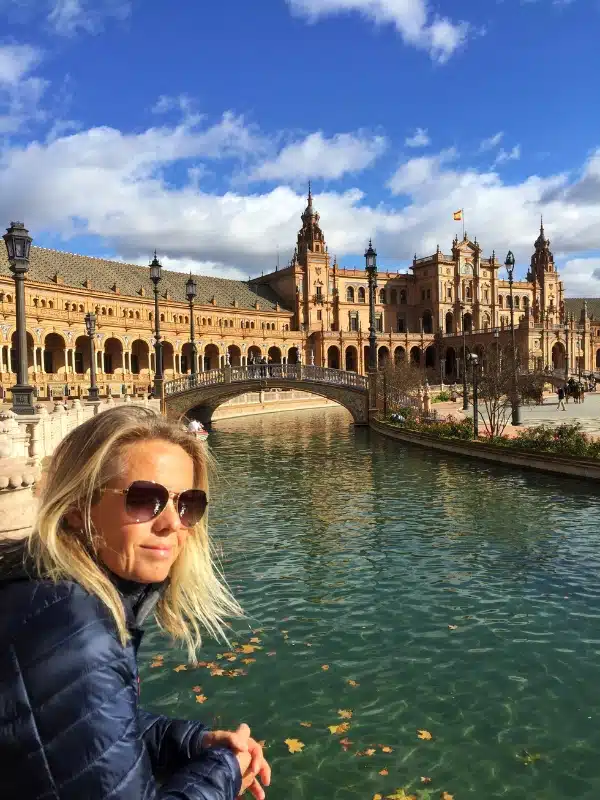
Eastern Spain
Costa Brava
Catalonia’s Costa Blanca is a rugged coast that spans the area between the Pyrenees Mountains along the France-Spain border and Barcelona and is known for its medieval towns, fine golf courses, and Mediterranean cuisine.
Catalunya is a fiercely independent region with a unique identity, like nowhere else in Spain. With its own language of Catalan, the region has long been an intersection of cultures and influences.
The topography of the region offers an intriguing mix of mountains and coast and all the activities associated with each – you could even combine a skiing trip with a beach holiday! Inland is the fascinating La Garrotxa Natural Park, known for its many extinguished volcanoes and medieval Girona, a classic Catalan city packed with history and architecture.
Along the coast are the resorts of Calella de Palafrugell, one of the most beautiful coastal villages in Spain, Tossa de Mar with its beautifully preserved old town, and Lloret de Mar. The latter resort is one of the first places in Spain to offer package holidays in the post-Franco tourist boom in the 1970s and has the highest concentration of hotels in the Mediterranean!
One of the best destinations for Christmas in Europe, the Barcelona winter weather means you won’t be lounging on the beach, but neither will you be bundled up in snow boots; snow in Barcelona is a rare event.
A Barcelona Christmas boasts fantastic festive light displays, fantastical Gaudi architecture including the almost-finished Sagrada Familia, superb Christmas markets, lots of great nightlife, and gastronomic delights surrounded by historic architecture and a lively atmosphere.
There are also other advantages of spending winter in Barcelona. The tourist crowds lining up at the city’s sights are fewer and the queues move quicker, so you save a lot of time. Accommodation prices also tend to fall, and it’s the perfect party city in which to spend New Year’s Eve.
RELATED POST: One Day in Barcelona: Itinerary, Map, Tips & Guide
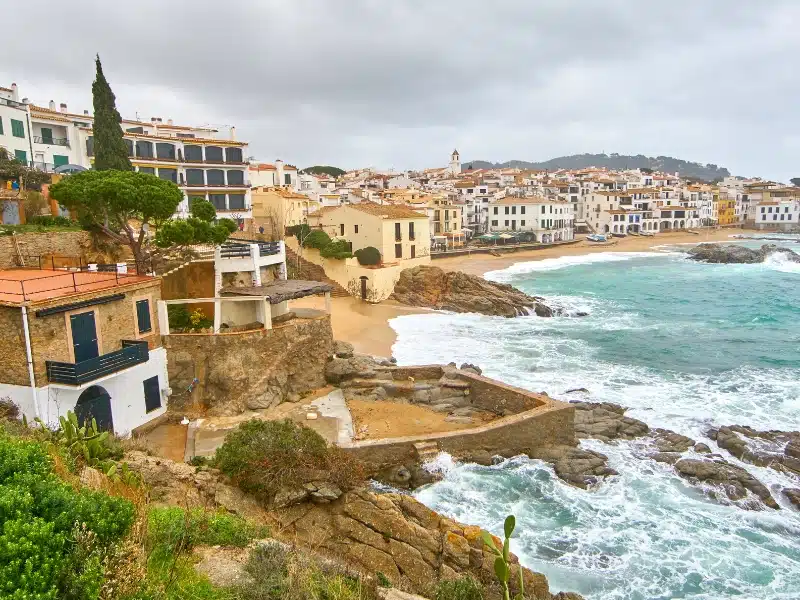
Costa Dorada
One of Spain’s smallest Costas, the Costa Dorada, or Golden Coast, is known for its long stretches of golden beaches and crystal clear turquoise waters.
Stretching south from Tarragona to Sant Carlos de la Rapita, the Costa Dorada has a landscape of lowlands wedged between the coast and mountains that are home to quiet villages surrounded by vineyards, olive and almond groves, and market gardens.
Not yet overdeveloped, many of the towns on this coast are traditional fishing villages built around a medieval castle or fortress. Salou and Torredembarra offer modern marinas and adventure theme parks although some of these will close during winter.
The beaches here tend to be long and sandy, especially around the Ebro Delta and Les Cases d’Alcanar, and inland there are historic towns, monasteries, and lakes to visit.
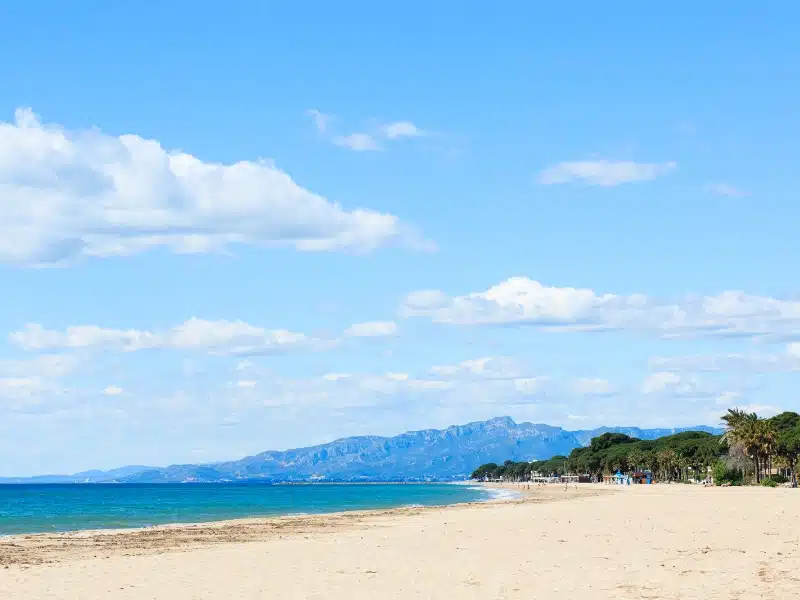
Costa de Azahar
Sandwiched between the Costa Blanca and the Costa Dorada, the Costa de Azahar is the name for the coast of the province of Castellon in Spain and stretches from Vinaros to Almenara. Known as the Orange Blossom Coast, the region is relatively unspoiled and the landscape is filled with orange and lemon groves, protected parks, and nature reserves.
The coast is characterized by fabulous beaches, top-class seafood, and a handful of atmospheric towns with ancient castles and labyrinthine streets, like Peniscola, Benicarlo, Oropesa del Mar, Benicassim, and Castellon de la Plana.
Our favorite spot on the Costa de Azahar is Alcossebre, an unassuming seaside town at the edge of the fantastic Parque Natural de la Sierra de Irta. This tiny nature reserve is crisscrossed with endless trails through deliciously smelling regional flora and fauna. Everywhere you hike here you’ll have a view of the shimmering turquoise sea.
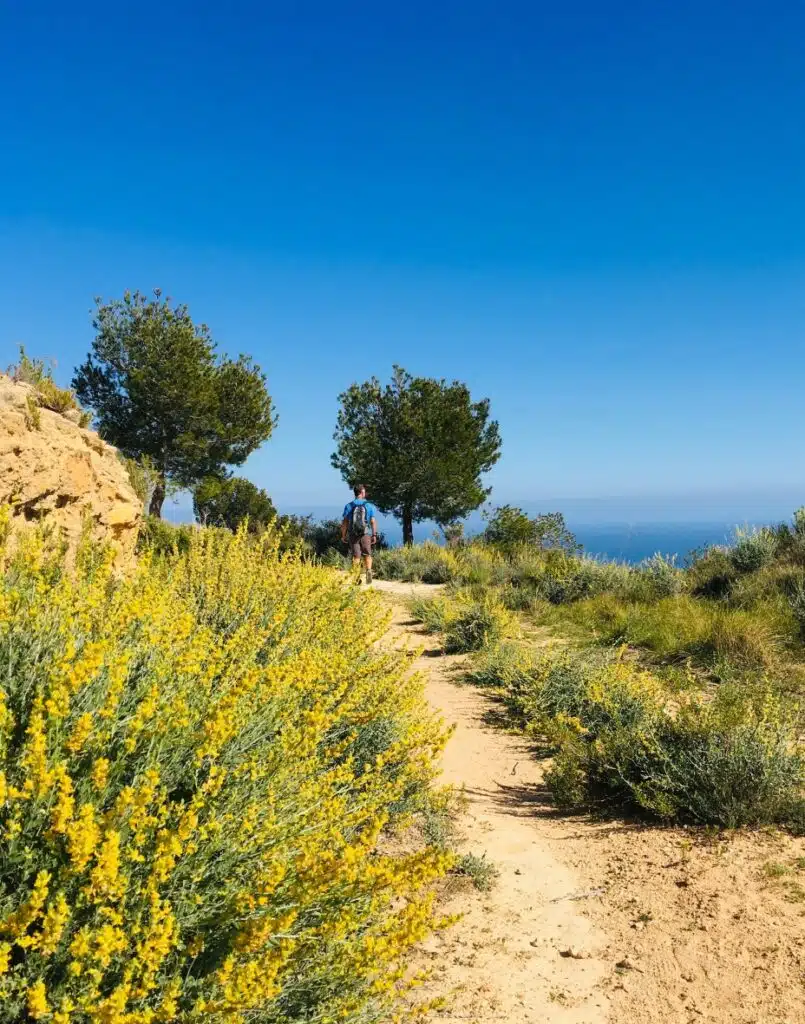
Costa de Valencia
Squeezed between the Costa Blanca and the Costa de Azahar, the Costa de Valencia is one long sandy beach between Sagunto and Oliva. A popular spot with the Spanish, many Valencians own beach houses along the coast.
The towns of Gandia, Sagunto, Cullera, Miramar, and Oliva offer pretty beachside boulevards, shopping, and plenty of restaurants to enjoy the local dish of Paella. Invented in the rice paddies of the Albufera, Paella is to the Spanish what a Sunday roast is to the Brits.
Valencia is undoubtedly one of the most charming destinations in eastern Spain and one of the most beautiful cities in Spain.
From Valencia, you can spend a day on the idyllic beaches, stroll through the lush Jardins del Turia, visit the Arts and Sciences Museum, walk among sharks in the Oceanografic, feel like royalty at the Museum of the Marques de Dos Aguas and take a wander through its streets while you delight yourself with the stunning historic architecture.
RELATED POST: Spain Road Trip: 8 Amazing Routes for an Epic Trip
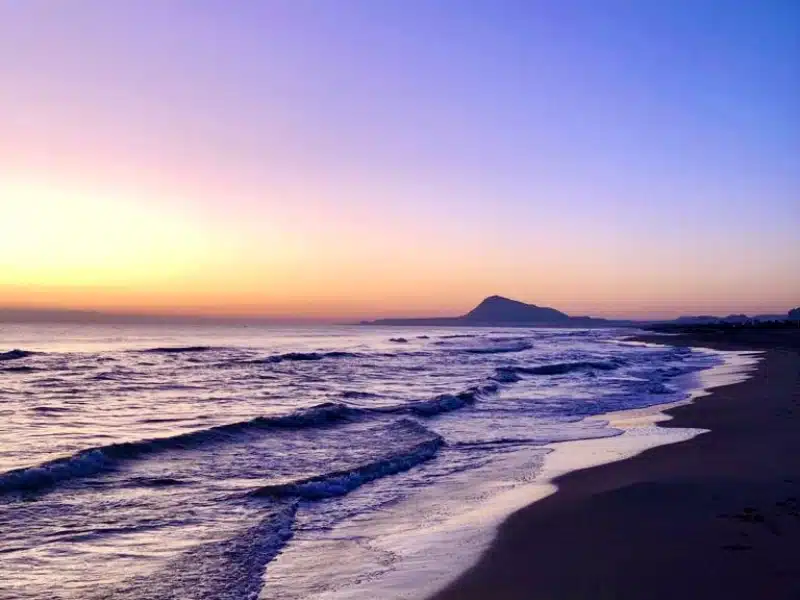
Costa Blanca
The Costa Blanca between Denia and Torrevieja offers warm winters, just a degree or so cooler than the Costa del Sol. The coast is dotted with lively expat cities and towns like Santa Pola, Calpe, and Benidorm.
The cities are vibrant and busy throughout winter, with the action less about the beach and more about long lazy lunches on the promenades and shopping in the narrow streets of the region’s old towns. We particularly like Alicante for its laid-back vibe, and Altea for its wonderful hilltop position.
The rocky coves and beaches between traditional Denia and Javea (also known as Xabia in the local Valencian dialect) make up Cap Negre, and the beaches of Portitxol and Granadella make great spots for a snorkel safari or speedboat tour.
Inland is the stunning Marina Alta, a mountainous region popular with road cyclists and hikers. Although the nights can be cooler, the days are usually sunny and there’s plenty to explore including the beautiful La Vall de Gallinera and pretty Guadalest.
These valleys and small towns are where you’ll find the real Spain, with family-run restaurants and tapas bars, local vineyards (make sure to try local mistela, a type of herby vermouth), and regular produce markets.
Further south is the bustling harbor town of Santa Pola, which stays busy year-round. With lots to do in the area, including great sandy beaches, the local salt flats, nature reserves, and plenty of golf courses to choose from, it’s an ideal destination for a winter holiday.
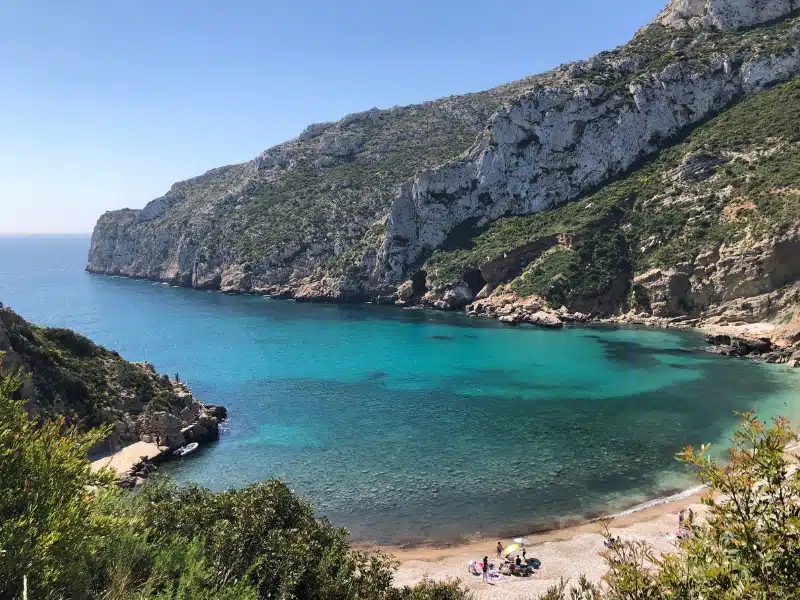
Costa Calida
Between the big-hitting Costa Blanca and Costa Almeria is the lesser-known Costa Calida. The 250km stretch of coastline has dramatic cliffs, white sandy beaches backed by dunes, and delightful coves, all lapped by the transparent waters of the Murcia region.
Taking in the historic port cities of Cartagena and Murcia, La Manga’s inland sea of Mar Menor, and the seaside towns of Mazarron and Aguilas, the Costa Calida does not perhaps have the charm of other Costas, but enjoys the warmth of the south and a microclimate that sees over 315 days of sunshine a year.
Murcia is home to some of Spain’s top resorts and golf clubs including La Manga Club, which enjoys three 18-hole golf courses and world-class accommodation. The area is also popular with families, especially the Mar Menor, which is shallow with gently sloping beaches, making it a safe place for kids to swim and play.
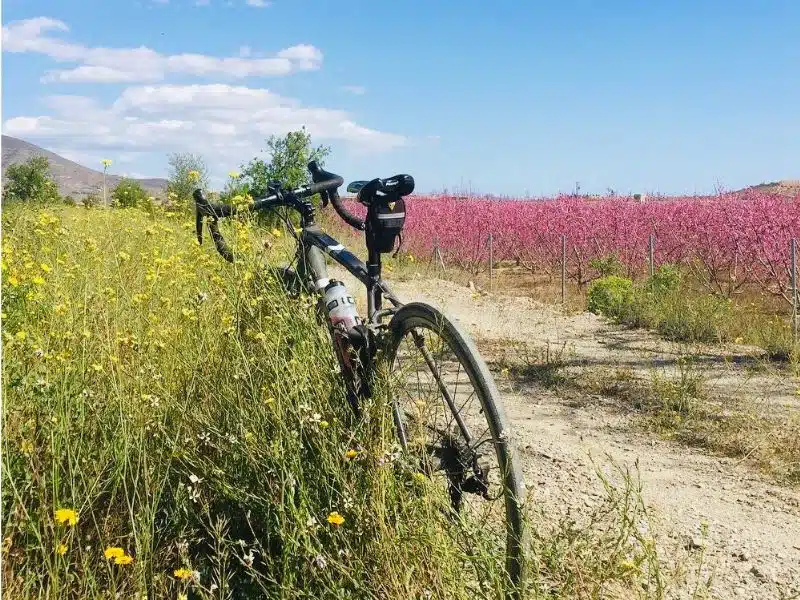
Costa de Almeria
The Costa de Almeria wraps around the most south-easterly point of Spain and encompasses the city of Almeria plus the towns of Mojacar and San Jose.
To the far southeastern corner of the region is the beautiful Cabo de Gata-Nijar, one of Spain’s most fascinating natural parks with amazing coastal rock locations and fabulous empty beaches like Playa de los Genoveses and Playa del Monsul.
One of the most notable features of Almeria is the variety of its landscapes. You can find everything from deserted beaches with transparent waters to Mediterranean forests and Spain’s only desert at Tabernas.
It rains on average one day a year here and feels very arid all year round. There are lots of opportunities for walking, kayaking, and paddleboarding around the fantastic coastline, and the coastal villages and city of Almeria provide great spots for dining and sightseeing.
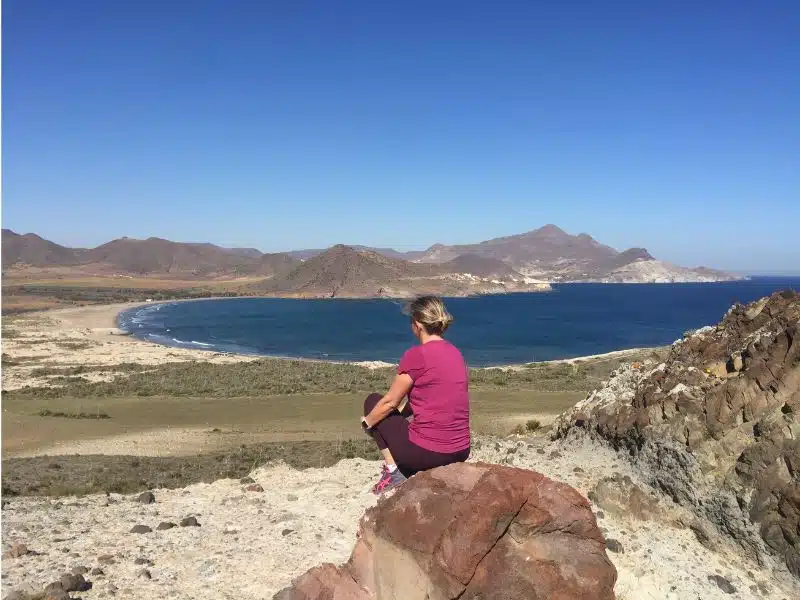
The Balearic Islands
The Balearic Islands are an archipelago in the western Mediterranean Sea, near the eastern coast of Spain. The archipelago is made up of the main islands of Majorca, Menorca, Ibiza, and Formentera, and is a popular place for spending winter in Spain.
If you’re road tripping in mainland Spain it’s easy to hop over on a ferry from Denia. We use Direct Ferries to plan and book ferry tickets to the Balearic Islands.
Majorca (also called Mallorca) is the largest island and known for its fabulous beaches, scenic coastline, and the Serra de Tramuntana mountains. Palma de Mallorca, the capital city, is known for its Gothic cathedral with an altar canopy by modern architect Antoni Gaudí, and Almudaina, a Moorish royal palace.
The beautiful island of Menorca (also called Minorca) is off the beaten path in comparison to the other islands and is known for its endless beaches, from long sandy crescents to rocky bays called calas, fringed by fragrant pine trees. The capital city of Mahon overlooks one of the world’s longest natural harbors and boasts a charming old town and a pretty promenade.
Ibiza (also called Eivissa) has gained a reputation as a party island, but in reality, the clubs and nightlife are mainly in Ibiza Town and Sant Antoni. Ibiza is also home to quiet villages, yoga retreats, and great beaches, from busy town playas to quieter sandy coves backed by pine-clad hills. A popular island, and easily reached by a year-round ferry from Denia, the shops, restaurants, chiringuitos, and bars generally stay open in winter.
Formentera is the smallest of Spain’s Balearic islands and is easily reachable by ferry from its more crowded island neighbor of Ibiza. Formentera is known for its clear waters and long stretches of beach backed by dunes and pine trees and is a popular spot in winter if you want to get away from the busier islands.
RELATED POST: Palma de Mallorca: The Best 2 Day Itinerary
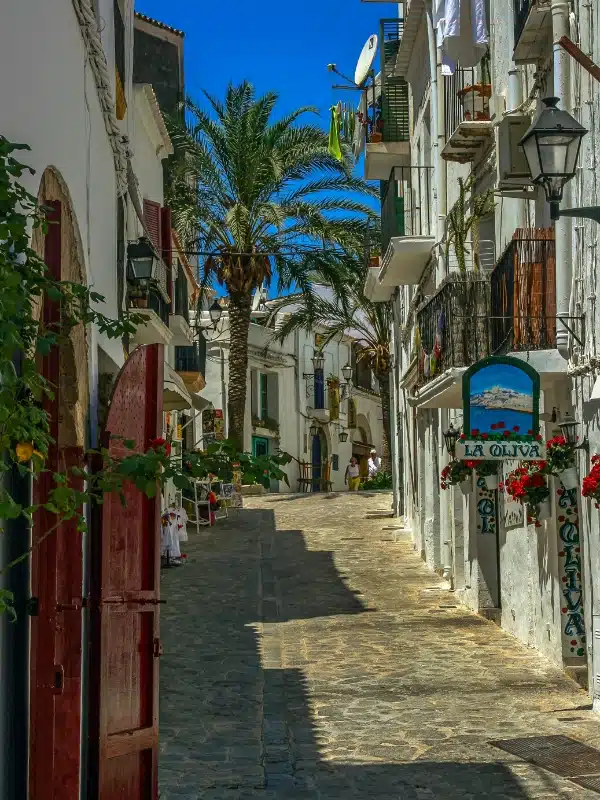
The Canary Islands
One of Spain’s most popular destinations in winter, the Canary Islands are a large archipelago of rugged volcanic isles off the northwest coast of Africa. The best known of these Spanish islands are Tenerife (the largest), Fuerteventura, Gran Canaria, Lanzarote, La Palma, La Gomera, El Hierro, and La Graciosa.
The Canaries also take the top spot for warm winter destinations in Spain and Europe during the northern hemisphere’s winter, averaging temperatures in the high teens to low twenties. The highest January temperature ever recorded was a whopping 27.9 °C | 82.2 °F in Lanzarote.
The Canary Islands seas are temperate enough to swim in all year round, the winter sunshine hours longer than most of Europe and they have less rainfall than mainland Spain and Portugal. The islands can be windy in the winter months, but if you enjoy sailing, windsurfing, and kiting, then so much the better!
Visit Tenerife for a lively atmosphere and great nightlife. Gran Canaria is best for hiking, national parks, and huge beaches, whilst Lanzarote is ideal for a family holiday, with unique volcanic landscapes and natural wonders, typified in the imposing and dramatic Timanfaya National Park.
Head for Fuerteventura if you’re looking for the best wind and water sports, and La Palma for fabulous snorkeling and local wildlife. La Gomera is a hidden gem and the most authentic of the larger islands and perfect for getting away from it all.
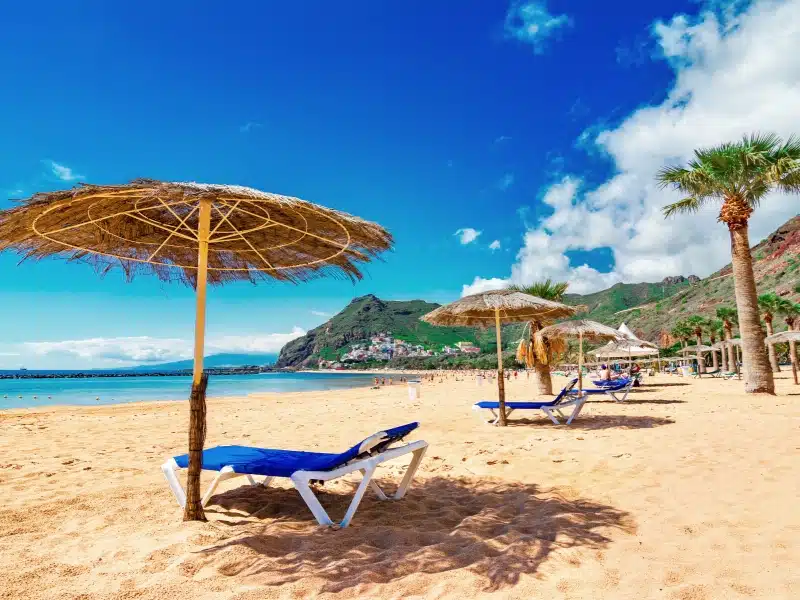
Northern Spain
The Costa Vasca, Costa Verde, and Costa de Galicia run along the coast of so-called Green Spain, from the Spain-France border to the Spain-Portugal border. These three Costas encompass the autonomous communities of Pais Vasco (the Basque Country), Cantabria, Asturias, and Galicia.
We wouldn’t recommend a winter trip to this part of Spain. The seas can be wild and fierce and the weather pretty grey and cold. It’s not unusual for the Picos de Europe and the foothills of the Pyrenees to see snow, and many bars, restaurants, and attractions will be closed for the winter months.
But, if the delights of the northern Spanish cities of San Sebastien, Bilbao, Gijon, A Coruna, Santiago de Compostela, and Vigo are calling, then make sure to pack plenty of layers, thick socks and waterproofs!
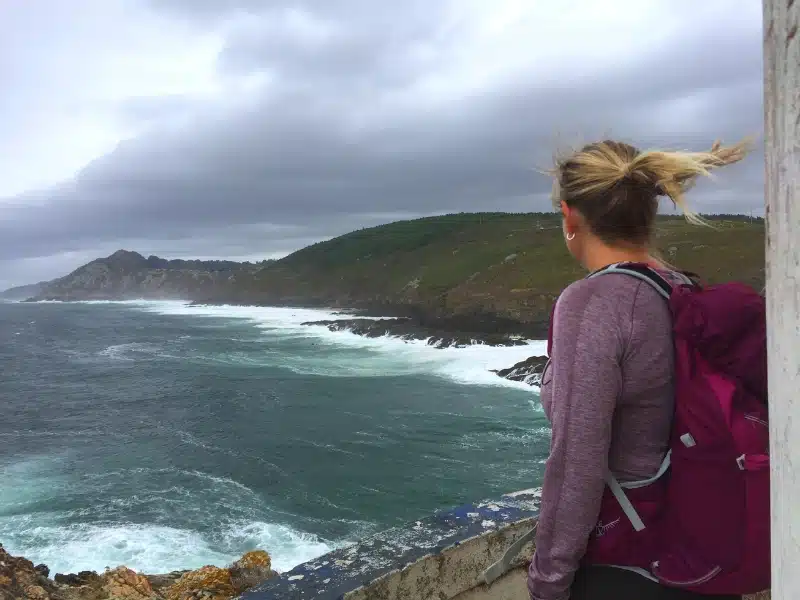
Madrid
The Spanish capital of Madrid is a beautiful and cultured city, but it wouldn’t be our choice for a winter visit! Sitting on a high plateau, Madrid sometimes sees snow and it can be wet, cold, and windy when it’s not frosted. In some winters the minimum temperatures can go below freezing.
We spent a weekend visiting Madrid in January a couple of years ago and frankly, it was pretty miserable, with all our activities planned to avoid the freezing rain that fell almost the whole time we were there.
But, if you’re not put off visiting Madrid in winter and the famous museums and historical treasures are calling, then you may be happy to brave the weather, and perhaps you’ll get lucky and enjoy the frosty clear winter days Madrid is also known for. You’ll also be rewarded with quieter city center streets and minimal lines for the big-hitting Museu Prado, the Baroque Royal Palace, and Plaza Mayor.
If you’re in the Castille-Leon area during the colder months, you should also visit the historic inland cities of Segovia, a UNESCO World Heritage Site, and Salamanca, home to the most elegant Plaza Mayor in Spain.
You’re also close to Spain’s most prolific wine-producing region, La Rioja. Penaranda del Duero is deep in the lush rolling vineyards where some of the best wines in Spain are produced and the pretty town that sits on the Ribera del Duero Wine Route and has an impressive castle is a popular weekend getaway for Madrilenos.
RELATED POST: Madrid in One Day: The Best Itinerary, Map, Tips & Guide
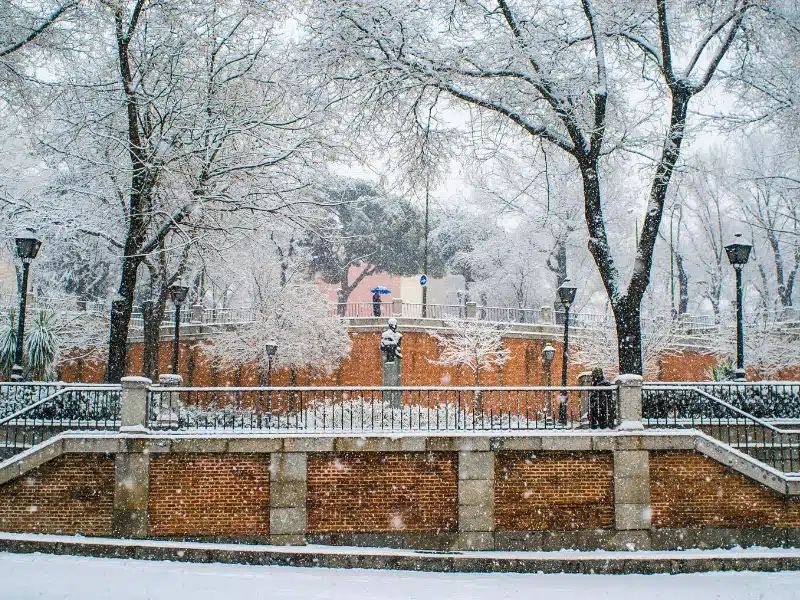
Other Winter Travel Ideas
Other Great Places in Europe for Winter Travel
If visiting Spain in winter isn’t grabbing you, these are a few other ideas of where to spend winter in Europe, or very nearby!
Algarve, Portugal
Portugal’s Algarve region spreads across from the Atlantic coast to the border with Spain at Vila Real de Santo Antonio and extends 48km north at its deepest point. While it may not offer swimming weather in winter, it will be pleasant to be outside in the balmy climate thanks to the Algarve’s westerly position on the continent.
We loved the wild west coast of the Algarve, rich with coastal fishing villages, vast beaches, and great hiking, including the Rota Vicentina, or Fisherman’s Trail, from Porto Covo to Lagos.
North of the Algarve is Alentejo, a famous wine region stretching across the west coast and home to some of our favorite spots in Portugal, including Zambujeira do Mar and Vila Nova de Milfontes.
Down on the south coast, you’ll experience gentler seas, lively resorts, beautiful beaches, fantastic beach caves, and world-class golf courses. Stand-out spots in the region are the resort town of Lagos, with its atmospheric narrow streets, Loule for its entertaining Saturday morning market, and the wonderful old town of Faro.
RELATED POST: Road Trip Portugal: Two Incredible Itineraries
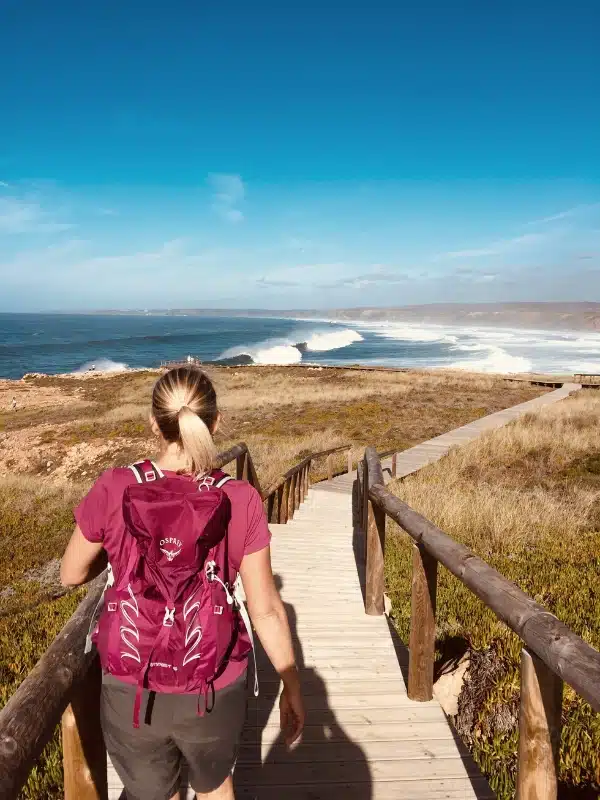
Sicily, Italy
Sicily is one of Italy’s best winter destinations. Right at the tip of Italy’s boot, this gorgeous island enjoys pretty good weather year round although the average temperature map belies the sometimes inconsistent winter weather.
It’s a small island, close to lots of bigger mainlands (think Italy itself and Africa) and this does have an effect. If the winds are coming from the south with the warm African air, you will enjoy temperatures in the low 20s, or mid 60s. Otherwise, you may well encounter rain and storms along the coasts and cold temperatures inland.
However, to compensate for this unpredictability, Sicily offers masses of culture, the gorgeous capital of Palermo, stunning landscapes, natural wonders, and great activities. You can hike and kitesurf here all year round, with the Stagnone Lagoon at Marsala being one of the best kite-surfing spots in the world.
RELATED POST: Sicily Road Trip: Itinerary, Tips & Map
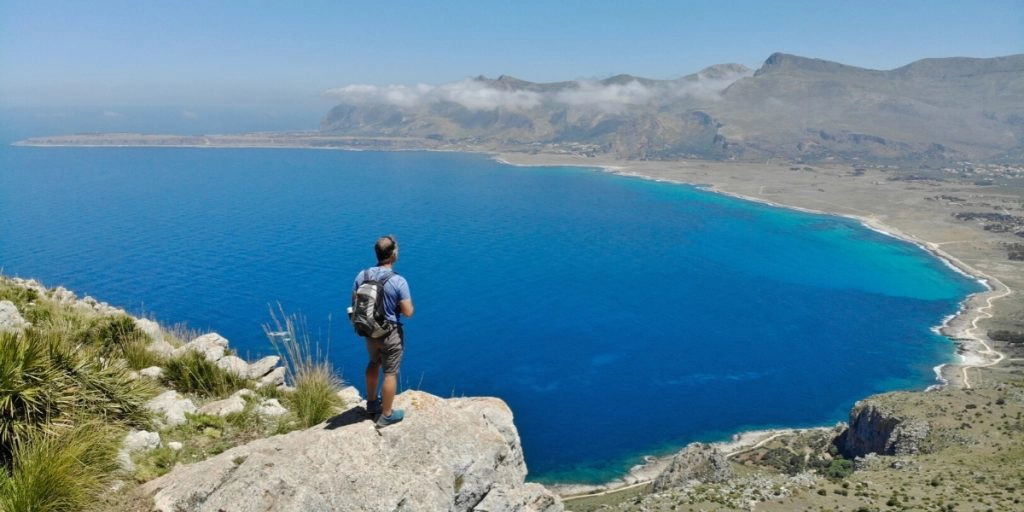
Peloponnese, Greece
The Peloponnese is a beautiful and peaceful winter destination and the furthest south you can get in Greece without venturing to its islands. Greece does suffer from unpredictable weather and needs the warm African winds to keep the climate mild.
We know of people who have sun-bathed every day through January and February (bliss!) and others who have suffered bad weather for weeks on end, and some years it even snows in Athens!
But, there is much to do and see and plenty of resorts where you can grab a cheap AirBnB or hotel for a month, hire a car, and go exploring. Our first pick would be the Mani, the middle peninsula of the Peloponnese, home to many of Greece’s most beautiful spots, including the picture-perfect small town of Kardamyli and the colorful harbor of pretty Gythio.
The Mani is a wild and rugged region and the landscapes are dramatic. The traditional villages, historic tower houses, vast olive groves, and rocky coves to snow-capped mountains will give you good reason to spend weeks exploring this part of Greece.
If you prefer to be a bit more central, Nafplio is our second choice. Known as the most romantic town in Greece, the tangle of small streets and squares is lively in winter and it’s within easy driving distance of Athens and many of the top archaeological sites of Greece.
RELATED POSTS: Greece Road Trip: Incredible Routes for the Best Trip
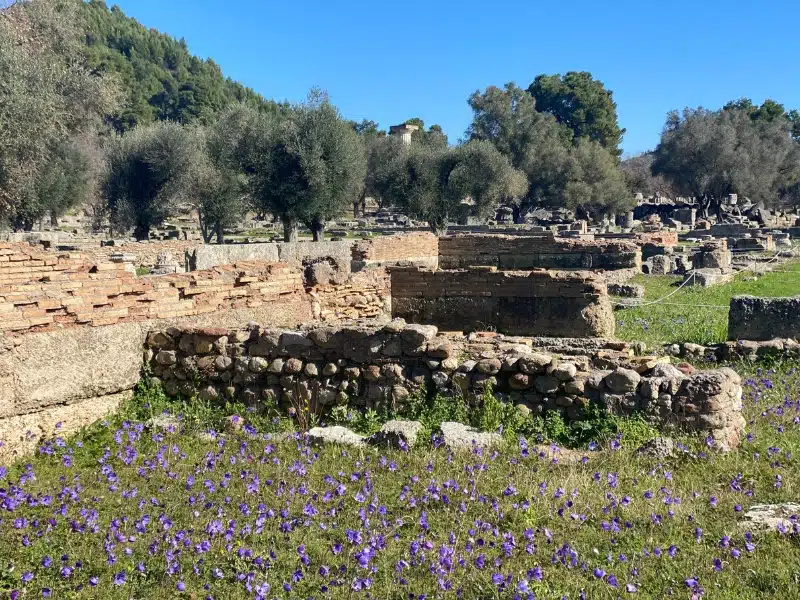
Southern Morocco, North Africa
Ok, so it’s not Europe but it’s pretty close! Morocco offers a warmer climate than Spain and is becoming more popular with snowbirds every year.
You won’t get the high temperatures until you’re south of the Atlas Mountains, but, for us, this is the most interesting bit of Morocco anyway. However, if you’re driving to Morocco from Spain, the cities of Fes, Meknes, and Chefchaouen are well worth visiting on the way south.
Marrakech is a natural starting point before you head west to the coast at hip Essouira and the surfer’s spot at Sidi Kauki. From here, it’s a fabulous trip south through the lush Souss Valley to authentic Tisnit, known for its leather work and Moroccan slippers.
Further south still are the old caravan routes through Southern Morocco’s mountainous regions to Ait Ben Haddou and Ouzazarte, before you hit the Sahara Desert and the rose dunes of Erg Chebbi at Merzouga.
RELATED POST: Morocco Road Trip: An Epic Atlantic to Sahara Journey
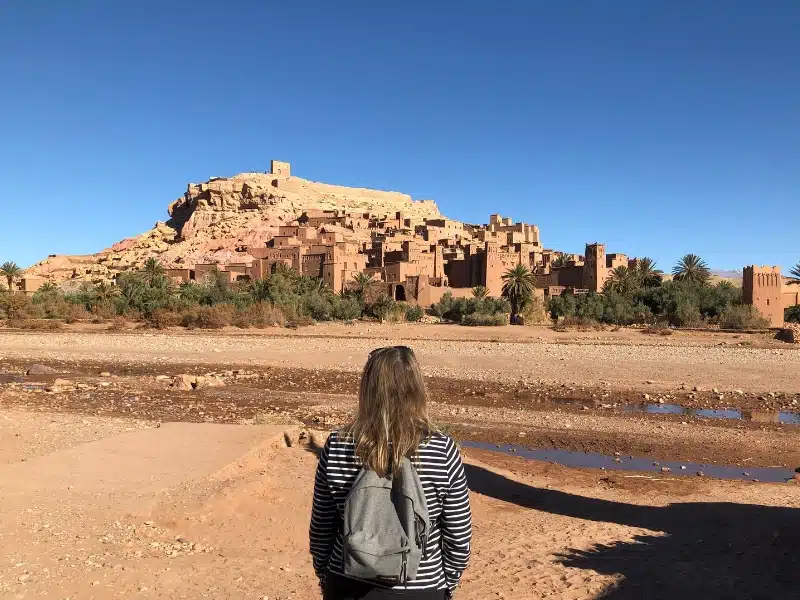
Mediterranean Coast, Turkey
Turkey is another destination that’s not Europe, but pretty close. Turkey’s Mediterranean Coast offers blue skies, perfect weather, and lots of fantastic holiday spots, with overwintering for a few months quite common.
Places like Antalya, Fethiye, Oludeniz, and Kas offer warm temperatures plus value for money long-stay accommodation for those who want to relax into the vibe and spend the winter in these southern areas.
In this region of Turkey, life feels similar to that in Europe, even though technically you’re in Asia. Head away from the holiday spots for more authenticity, delicious local cuisine, and dramatic landscapes.
From the coast, you can easily visit the popular attractions of Cappadocia and Pamukkale either by hiring a car and driving yourself or taking one of the trips that depart from the coast’s towns and cities regularly. The great thing about seeing these places in the cold season is that there are fewer people to spoil those Insta-worthy images!
RELATED POST: Road Trip in Turkey: 20 Incredible Places to Visit

Spain Winter FAQs
What is the warmest place in Spain in the winter?
One of the most popular places to overwinter in Spain, the Canary Islands take the top spot for the warmest place in Spain in the winter, averaging temperatures in the high teens to low twenties. The highest January temperature ever recorded in the Canary Islands was 27.9 °C | 82.2 °F in Lanzarote.
Can I stay in Spain for the winter?
Spanish law says that foreign nationals from any other country may stay in Spain for a maximum of 90 days. After this, a visa will be required unless you are a citizen of the European Union, Iceland, Liechtenstein, Norway, or Switzerland. You can find out more about entry requirements, length of stay, and visas by visiting Spain’s official tourism website.
Does Spain have harsh winters?
Some areas of Spain can have harsh winters. Spanish winter temperatures in the interior can drop as low as -15 °C | 5 °F in the coldest month of January, especially at higher altitudes like the Meseta Central, Spain’s great high plateau.
Other areas where low temperatures occur in the cooler months of winter are the Pyrenees and Sierra Nevada mountain ranges, home to the 3,479m Mulhacen, the highest peak in mainland Spain, and winter sports at Spain’s premier ski resorts.
Is it worth going to Spain at Christmas?
Absolutely. Christmas in Spain is lively and colorful, and you’ll see lots of familiar rituals and decorations just like at home. Spain celebrates Christmas Day on 25th December, but the 6th January is also an important day when the Feast of the Epiphany or the Three Kings’ Day takes place. If you’re planning on visiting Spain at Christmas, remember that it’s considered a high season, with prices to match!
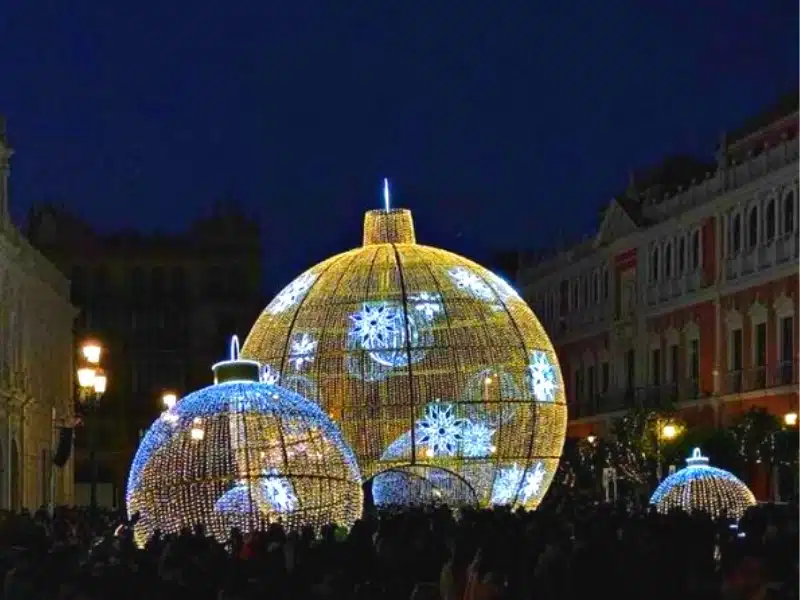
Looking for more Spain travel inspiration? Check out these top posts…
The 16 Best Second Cities in Europe You Shouldn’t Miss
Adventure Travel Bucket List: 15 Epic Experiences in Europe
The Ultimate Europe Travel Bucket List: 15 Classic Experiences to Inspire Your Next Trip
Europe’s Best Kept Secrets: Unique Travel Destinations to Visit in 2026
Winter Road Trip in Europe: 17 Epic Itinerary Ideas
13 Europe Winter Vacation Ideas That Belong on Your Bucket List
Love it? Pin it!
